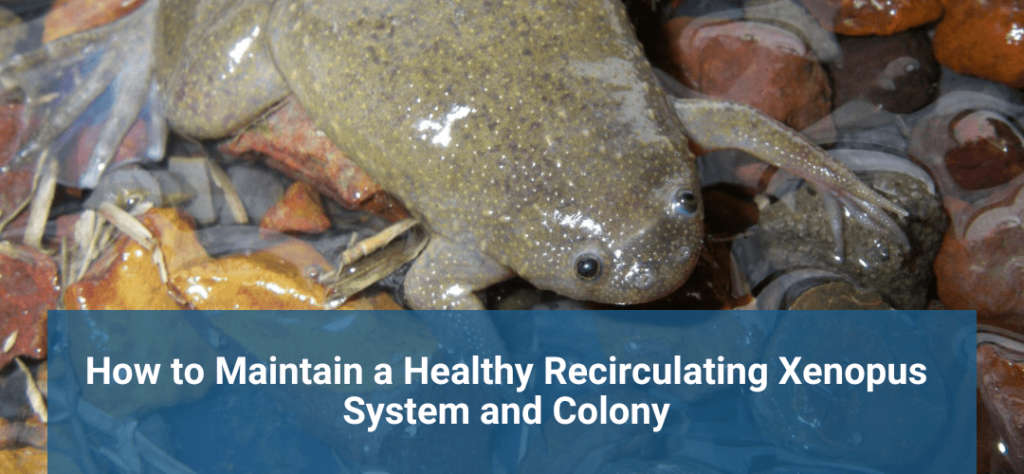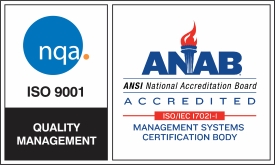How to Maintain a Healthy Recirculating Xenopus System and Colony

Xenopus laevis, also known as the African clawed frog, plays a role as a model organism in research because of its resilience and simple care requirements. It’s essential to keep a functioning Xenopus system and colony to guarantee the health of the frogs and the accuracy of research results. Let’s explore the strategies, for managing such a system focusing on water quality, system setup, colony care and health supervision.
Understanding the Recirculating System
A recirculating Xenopus system is designed to continuously filter and recycle water, providing a stable and clean environment for the frogs. Key components include tanks, filters, pumps, UV sterilizers, and water quality monitoring systems. The primary goal is to minimize water waste while maintaining optimal conditions for the Xenopus colony.
System Components
- Tanks: Xenopus tanks should be made of non-toxic materials and designed for easy cleaning and maintenance. Each tank must have adequate space for the frogs to swim. Tank drain design and solids removal is important to reduce labor and maintain a clean tank.
- Filters: Mechanical, biological, and chemical filters are essential for removing debris and breaking down waste products.
- Pumps: Pumps circulate water through the system, ensuring continuous filtration and oxygenation.
- UV Sterilizers: UV sterilizers kill pathogens and help maintain water quality by reducing microbial load.
- Water Quality Monitoring Systems: Regular monitoring of water parameters such as pH, ammonia, nitrite, nitrate, and temperature is critical for the health of the Xenopus colony.
Maintaining Water Quality
Water quality is the cornerstone of a healthy Xenopus system. Poor water quality can lead to stress, disease, and death in the frogs.
Key Water Parameters
- pH: The ideal pH range for Xenopus is 6.5-8.0. Sudden changes in pH can stress the frogs, so it’s important to maintain stability.
- Ammonia: Ammonia is toxic to Xenopus. It should be kept at undetectable levels through effective biological filtration.
- Nitrite: Like ammonia, nitrite is also toxic and should be maintained at undetectable levels.
- Nitrate: Nitrate is less toxic but can cause stress in high concentrations. Aim to keep nitrate levels below 20 ppm.
- Temperature: Xenopus laevis thrives at temperatures between 64-72°F (18-22°C). Consistent temperature control is crucial for their health.
Water Changes
Regular water changes are necessary to maintain nitrate at acceptable levels. A common practice is to replace 10% of the water daily, depending on the system’s stocking density and water quality.
Filtration Maintenance
Filters should be cleaned regularly to prevent clogging and maintain efficiency. Mechanical filters typically require weekly cleaning, while biological filters need periodic but less frequent maintenance to preserve beneficial bacteria.
System Design and Setup
The design of the recirculating system significantly impacts its effectiveness and the health of the Xenopus colony.
Tank Layout
- Tank Size: Each adult Xenopus laevis should have at least 3 liters of water. Group housing is common, but overcrowding must be avoided.
- Hiding Spots: Providing hiding spots reduces stress and mimics the frogs’ natural habitat. PVC pipes, rocks, and artificial plants can be used.
- Substrate: A bare-bottom tank is preferred for easy cleaning and to prevent ingestion of substrate materials.
Filtration System
- Mechanical Filtration: First stage mechanical filtration to remove 100-200 micron particles or larger. Second stage 50 micron filter before UV unit
- Biological Filtration: Surface area for nitrifying bacteria to live on. Ideal designs are self-maintaining requiring little to no maintenance.
- Chemical Filtration: Activated carbon to remove toxins and impurities.
UV Sterilization
A UV sterilizer should be installed to control pathogens and algal growth. Ensure that the UV lamp is replaced regularly according to the manufacturer’s recommendations.
Colony Management
Effective colony management practices are essential for the well-being and productivity of the Xenopus frogs.
Feeding
- Diet: Xenopus laevis are carnivorous and should be fed a diet of high-quality frog pellets, supplemented with live or frozen foods like bloodworms or brine shrimp.
- Feeding Frequency: Adult frogs should be fed 3 times per week, with juveniles and tadpoles requiring more frequent feeding.
- Feeding Amount: Avoid overfeeding, as uneaten food can deteriorate water quality. Feed only what the frogs can consume in a few minutes.
Breeding
- Breeding Triggers: Breeding can be induced by changing water temperature and simulating rainy season conditions.
- Egg Collection: Collect eggs promptly to prevent fungal infections and cannibalism by adult frogs.
- Tadpole Rearing: Tadpoles require different care, including a separate tank, appropriate food, aeration, and regular water changes.
Health Monitoring
Regular health checks are vital for early detection and treatment of diseases.
- Observation: Daily observation of the frog’s behavior, appetite, and physical condition helps identify potential health issues.
- Common Diseases: Watch for signs of common diseases such as red-leg syndrome, chytridiomycosis, and bacterial infections.
- Quarantine: New frogs or those showing signs of illness should be quarantined to prevent the spread of disease.
Regular Maintenance and Record Keeping
Routine maintenance and accurate record-keeping ensure the long-term health of the Xenopus colony and the efficiency of the recirculating system.
Daily Tasks
- Check Water Parameters: Monitor and record pH, ammonia, nitrite, nitrate, and temperature daily.
- Inspect Equipment: Ensure all equipment, including pumps, filters, and UV sterilizers, are functioning properly.
- Feed Frogs: Feed according to the established schedule and remove any uneaten food.
Weekly Tasks
- Water Changes: Perform partial water changes as required.
- Clean Filters: Clean mechanical filters and check biological filters.
- Health Checks: Conduct a more thorough health check of the frogs.
Monthly / Quarterly / Yearly Tasks
- Deep Cleaning: Perform a deeper clean of tanks and equipment.
- UV Lamp Replacement: Check the UV sterilizer and replace the lamp if necessary.
- Inventory: Check supplies of food, medications, and maintenance equipment.
Troubleshooting Common Issues
Poor Water Quality
- Issue: Elevated ammonia, nitrite, or nitrate levels.
- Solution: Increase the frequency of water changes, clean filters, and reduce feeding.
Disease Outbreaks
- Issue: Signs of disease such as lethargy, sloughing skin, skin lesions, or abnormal behavior.
- Solution: Quarantine affected frogs, consult a veterinarian, and treat with appropriate medications.
Equipment Failure
- Issue: Malfunctioning pumps, filters, or UV sterilizers.
- Solution: Have spare equipment on hand, perform regular maintenance, and address issues promptly.
Maintaining a healthy recirculating Xenopus system and colony requires diligent care, regular maintenance, and a thorough understanding of the frog’s needs. By ensuring optimal water quality, designing an effective system, managing the colony well, and monitoring health closely, researchers can create a stable environment that supports the well-being of their Xenopus frogs and the success of their research endeavors. Remember, the key to success lies in consistency, observation, and timely intervention.



